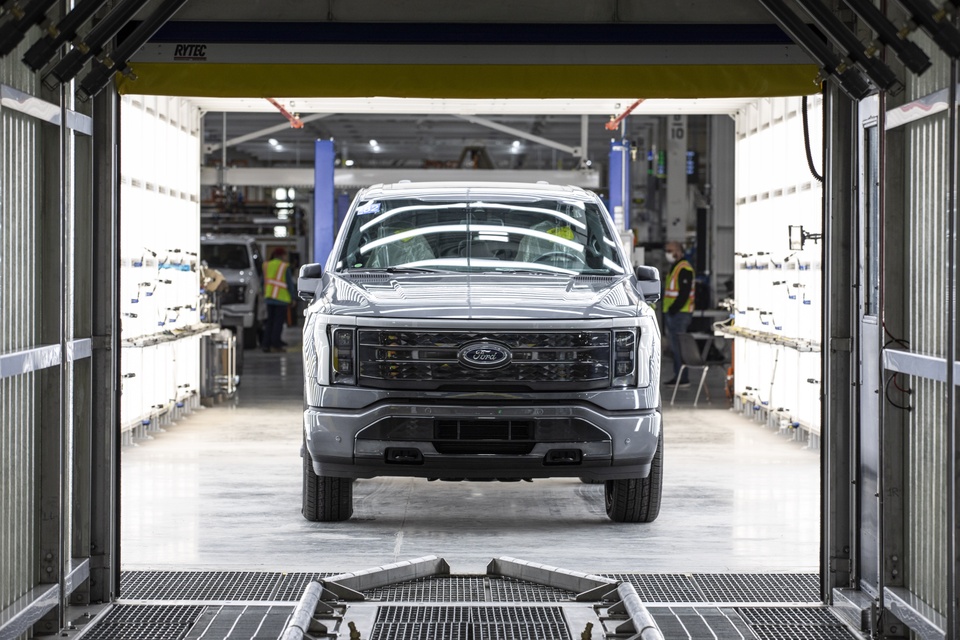
|
According to Motor1, the 25% tariff imposed by the Trump administration on imported vehicles into the US will officially take effect from the beginning of April.
A report by Bernstein Institutional Services indicates that the average selling price of new vehicles in the US will increase significantly due to this policy.
Rising Vehicle Prices
Data from Kelley Blue Book shows that the average price of a new vehicle in the US is currently around USD 49,740. Bernstein predicts that this price will increase by 7% (approximately USD 3,600) due to the tariffs, pushing the average price of new vehicles in the US to a record high.
According to Bernstein’s forecast, the tariffs will cost automakers an additional USD 6,700 per vehicle, or about USD 110 billion per year.
“This forces manufacturers to choose between raising prices, bearing the additional costs, or accepting reduced profit margins,” the Bernstein report says.
|
|
|
Car manufacturers have to consider increasing selling prices or accepting reduced profit margins due to the new tariff policy. Photo illustration: Mexico Business News. |
Even if the tariff burden is passed on to customers, domestic automakers like Ford and General Motors should prepare for a potential 30% drop in earnings before interest and taxes (EBIT) this year.
Stellantis is expected to fare better due to its use of domestically produced parts for assembly in its Mexican factories. Tesla, with its Gigafactories located in the US, is also better positioned to weather the impact of the new tariffs, according to Bernstein.
Smaller electric vehicle manufacturers like Rivian and Polestar will likely face significant challenges due to their greater reliance on supply chains outside the country.
A Headache for Carmakers
According to Bernstein, US automakers are currently stockpiling inventory to mitigate the negative impact of the new tariffs.
There are currently about 2.7 million vehicles in stock in the US, but strong market demand leads Bernstein to believe that this inventory will only last until the first week of May.
After that, according to Bernstein, the new tariffs will start affecting automakers’ profits.
|
|
|
Companies are stockpiling inventory ahead of the new tariff policy taking effect in the US from next month. Photo illustration: North Dallas News. |
Vehicles produced or assembled in the US may temporarily be exempt due to the US-Mexico-Canada Agreement (USMCA), but this will last for a maximum of one month.
Bernstein Institutional Services predicts that it could take US automakers 12-36 months to reorganize their supply chains and assembly plants.
Previously, automakers needed 18-24 months to recover from the semiconductor shortage caused by the Covid pandemic in 2020-2021, which resulted in billions of dollars in lost revenue.
Bernstein believes that US automakers now face a choice between raising vehicle prices or maintaining sales volumes.
If the cost of tariffs is passed on to customers, sales will likely decrease. On the other hand, sales volumes could remain stable if automakers choose to absorb the additional costs themselves.
|
|
|
Passing on the additional costs of tariffs to customers or absorbing them to maintain sales will be a difficult decision for US carmakers. Photo illustration: Ford. |
According to Bernstein, passing on the cost of tariffs to customers will likely result in a 10% drop in sales for US automakers. However, larger trucks, expensive vehicles, and luxury cars may be less affected as their selling prices are already high.
On the other hand, compact SUVs and small sedans, two of the most popular segments in the US, will be hit hard due to thin profit margins and intense market competition.
Bernstein Institutional Services predicts an 8-11% decline in sales for vehicles like the Toyota RAV4, Subaru Crosstrek, Toyota Corolla, and Honda Civic.
Recommended Reads for Your Next Road Trip
The Automotive section brings you a selection of captivating books with diverse topics. During those moments of rest and relaxation on your journeys, a good book can be an enjoyable companion.














































